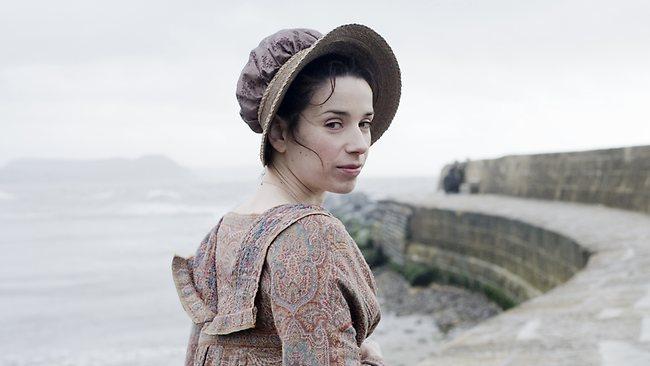Revisiting some old friends well worth the trip
THERE is plenty to think about and argue with throughout this book.

ACCORDING to Patricia Meyer Spacks, in this erudite and often surprising book, "Rereading . . . is a treat, a form of escape, a device for getting to sleep or distracting oneself, a way to evoke memories (not only of the text but of one's life and of past selves), a reminder of half-forgotten truths, an inlet to new insight . . . And it can provide security."
I wonder how many of us reread, and with such forensic attention as this? There is plenty to think about and argue with throughout this book.
For Spacks the book also constitutes "a defence of reading" and she expands her remit thus: "I want to use rereading as a way to think about reading" and to reflect on how individual and changeable reading experiences can be. Of Alice in Wonderland, which she read at six, Spacks writes: "I owned those words because I felt them so profoundly; I knew exactly what they meant. Even though I missed all the literary allusions and didn't comprehend some of the vocabulary, I understood the experience the language recorded: that of being left alone to make your own discoveries." Alice became her talisman. This chapter, Once Upon a Time, is one of the best in the book and calls to mind Francis Spufford's wonderful The Child that Books Built. Spacks rejects the notion that enjoying children's books is mere nostalgia.
Spacks did not come from a reading family. Her mother worried about the "dangers of bookishness". Despite this, Spacks became a noted specialist in 18th-century English literature and, in particular, Jane Austen. On Rereading was her retirement project after a long and distinguished career, including being president of the American Academy of Arts and Sciences. She considers her project "an autobiography of thoughts and feelings elicited by novels" -- only novels, "for the sake of coherence". On Rereading brings a sharp, questing academic mind to its task. It is also deeply personal, honest, clear and engaging.
Stories are poked and prodded as Spacks interrogates her early and later responses. Do changes in society and in personal circumstances, and why, when and where we read a book, affect how we read and respond? She stresses the importance of reading for pleasure: "The 'why' of reading fiction . . . involves more than the power of truth. It includes the power of pleasure, an aspect of reading generally neglected in academic discourse and one that non-academic readers often deprecate." Neglected all too often in our schools, too.
Before leaping to the 1950s and the decades beyond, Spacks cannot resist revisiting Austen and wondering why she continues to beguile readers, especially young women. Perhaps she "represents civilisation . . . the mastery of style that declares order and control". She considers the many film and television versions another form of rereading.
From the 50s Spacks selects J.D. Salinger's The Catcher in the Rye and Kingsley Amis's Lucky Jim. Both spoke to her at a particular time in her life and career. One of them now evokes "outrage and disgust". Of her 60s choice she writes: "The book that absorbed, almost obsessed, me . . . and likewise absorbed and obsessed virtually every woman I knew, as well as some men, was Doris Lessing's Golden Notebook". It obsessed me, too. Spacks is at her most acerbic, forthright and funny in scrutinising not only this book but also her 60s self.
Novels are chosen because they were important to Spacks at the time rather than for their perceived significance or canonical status. She struggles with the 70s: Roth? Updike? Bellow? William Styron's Sophie's Choice? She settles for Iris Murdoch's The Sacred and Profane Love Machine. "[The Murdoch] seemed tempting to reread precisely because I recalled so little about it. Could it measure personal change, could it tell me something about social history?"
Notions of pleasure and "fascination" are further examined. Graham Greene's Brighton Rock "seems to guarantee pleasure still" as does the physical copy of her original orange Penguin paperback. Trollope, George Eliot, Wilkie Collins and Mrs Gaskell are enduring favourites. To Spacks's 10-year-old self Gone with the Wind was dazzling. But today?
Spacks examines how differently she approaches "professional reading". Along with "guilty pleasures" (Wodehouse and Arnold Bennett) she also considers books she "ought" to like. "I set out to read -- deliberately, carefully, purposefully -- several books that most other people admire." So Dickens's The Pickwick Papers, Ford Maddox Ford's The Good Soldier and Saul Bellow's Herzog. All receive mindful, and at times tart, close rereadings. How important is plot and can a novel be admired but not liked? Is shared reading worthwhile? And: "If you read a book the first time on paper and reread it on screen, will the experience resemble that of reading a favourite Russian novel in a new translation?" You may conclude with Spacks that "Rereading . . . turns out to be a much more complicated process than I initially assumed."
Agnes Nieuwenhuizen is a writer and reviewer who lives in Woodend, Victoria.
On rereading
By Patricia Meyer Spacks
Belknap harvard, 280pp, $34.95 (HB)


